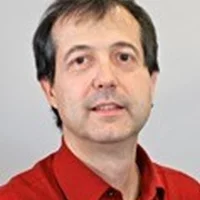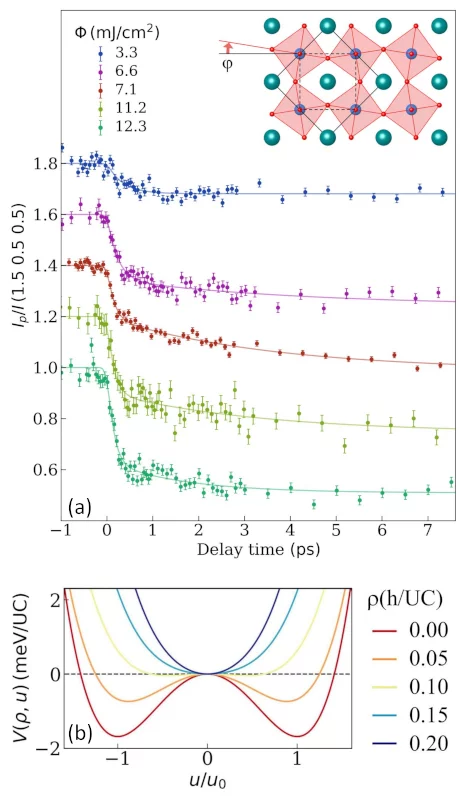Understanding how and how fast we can drive atoms to create a structural phase transition is of fundamental interest as it directly relates to many processes in nature. Here we show that a photoexcitation can drive a purely structural phase transition before the energy is relaxed in the material that corresponds to a “warmer” equilibrated state. By above band gap photoexciting Ca:SrTiO3 and using ultrashort x-ray pulses from the FEMTO slicing source we find a ultrafast reduction of the reflections (Fig. 1a) sensitive to the octahedral rotation transition (inset). This process can be understood by the change of the corresponding potential as a function of hole doping (Fig. 1b), which shows that the distortion amplitude moves to zero with hole doping which is in contrast to electron doping. These results show that even for a transition that is governed by a softening of a particular phonon mode, the ultrafast transition is driven by the electronic change (hole doping) in the chemical potential induced by a fs laser pulse. This points out new possibilities in the ultrafast manipulation of the crystal structure.
Contact
Urs StaubLaboratory for Synchrotron Radiation — Condensed Matter Physics
Swiss Light Source, Paul Scherrer Institute
5232 Villigen PSI, Switzerland
Telephone: +41 56 310 4494
E-mail: urs.staub@psi.ch
Michael Porer
Laboratory for Synchrotron Radiation — Condensed Matter Physics
Swiss Light Source, Paul Scherrer Institute
5232 Villigen PSI, Switzerland
Telephone: +41 56 310 3469
E-mail: michael.porer@psi.ch
Original Publication
*Ultrafast Relaxation Dynamics of the Antiferrodistortive Phase in Ca doped SrTiO3 *M. Porer, M. Fechner, E. Bothschafter, L. Rettig, M. Savoini, V. Esposito, J. Rittmann, M. Kubli, M. J. Neugebauer, E. Abreu, T. Kubacka, T. Huber, G. Lantz, S. Parchenko, S. Grübel, A. Paarmann, Noack, P. Beaud, G. Ingold, U. Aschauer, S. L. Johnson, and U. Staub
Physical Review Letters, 3 August 2018
DOI: 10.1103/PhysRevLett.121.055701

